REVIEW – Crossfire DG-6
PRODUCT: DG-6 Pack
MANUFACTURER: Crossfire Pty Ltd
DESCRIPTION:
An external frame, large patrol pack with external pockets and a veritable tonne of features.
This item is the Australian company Crossfire’s entry into the non-modular long range or general purpose tactical backpack market. Capacity is listed at 85L (um, 5187 cubic inches).
REVIEW NOTES:
OK, this was my very first kit review written for a couple of discussion forums.
At the time, I thought it appropriate to contribute something to the boards contents and bandwidth other than smart-alec comments.
I first bought this pack after some exhaustive research when I was in need of a decent sized pack to walk the Overland track for the first time in 2005.
I’ve edited this one a little bit to reflect further experience and changes in my opinion since the article was first written.
Since I’ve used the original photo’s, please forgive the quality of them. I’m glad to say, that my photography has gotten much better in the last six years.
LAYOUT:
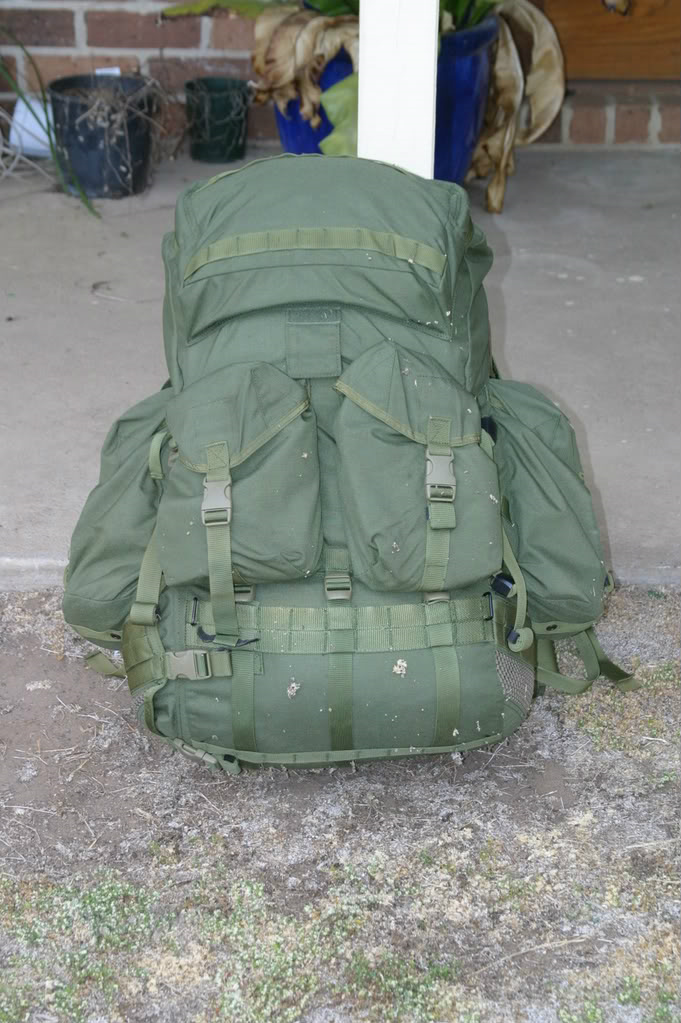
FRAME –
The DG-6 uses the third generation DEI molle frame. Apparently the composition of the plastic in the frame has been improved upon from previous generations first used by American forces in Afghanistan.
Now, I know some people who can personally attest to the shortcomings of the frame composition for actual hard use. Apparently, DEI has answered these complaints with a much more stable frame polymer better able to handle constant flexing and exposure to hot and cold conditions.
Personally, I have taken this pack into cold conditions when I walked the The Overland Track in Tasmania, it snowed on me. I froze. No complaints there. Since I live in sunny Queensland, my pack has seen some temperature extremes. No problems yet.
There is a gap between frame and harness like that found on the old ALICE pack. It’s very handy for shoving my poof mat (oops, un-PC name for sleeping mat) into. There were plans afoot from Crossfire to utilise this space for stowing a water bladder of some description.
HARNESS –
Proprietary harness as designed by Crossfire. The shoulder straps are some of the most comfortable I have ever seen. Straps are comprised of a
3-D design, with an efficient sweat wicking mesh, and two layers of different density foam. External surfaces of the shoulder strap are lined with a rubbery non-slip layer to stabilise a rifle butt when firing. Think skateboard tape, but not quite as aggressive in its abrasiveness. Quick release buckles are fitted.
The standard sternum strap and hip belt are fitted. The hip belt can be folded away out of sight and avoids snagging for transport or if not compatible with webbing (load bearing equipment or fighting order). The harness is also adjustable for back height and top tension.
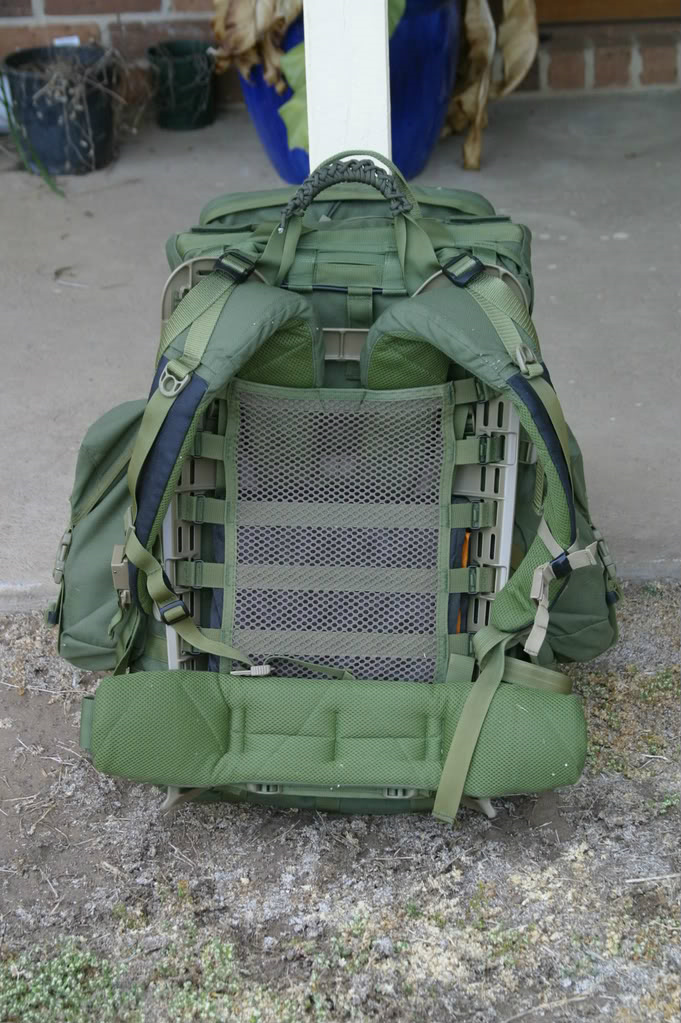
RUCKSACK –
The design of the rucksack itself is very reminiscent of the Wilderness Equipment SAS pack. Not overly surprising, since Ian Maley, who designed the original SAS pack (owner of Wilderness Equipment) is also the designer of the DG-6. Whilst it’s parentage is plainly obvious, there are a number of improvements evident with the DG-6. Unlike it’s older brother the SAS pack, the DG-6 has a series of loadbearing strips of webbing running across it.
These are all under the external fittings (like pockets) and essentially force the load to the frame to allow it to be “sprung”. Crossfire describes this as a “live load”.
Radio access is vastly improved. There are 2 water-proof zips to access any stowed radio. One zip is located on the top of the lid for PRC-77 type (ie. Top mounted control panels) and another zip on the side located near the frame for any side mounted control panels (such as the Australian Wagtail series. No idea what these radios are known as to the rest of the world, sorry folks). These waterproof zips are covered by fabric flaps to prevent any snagging and damage.

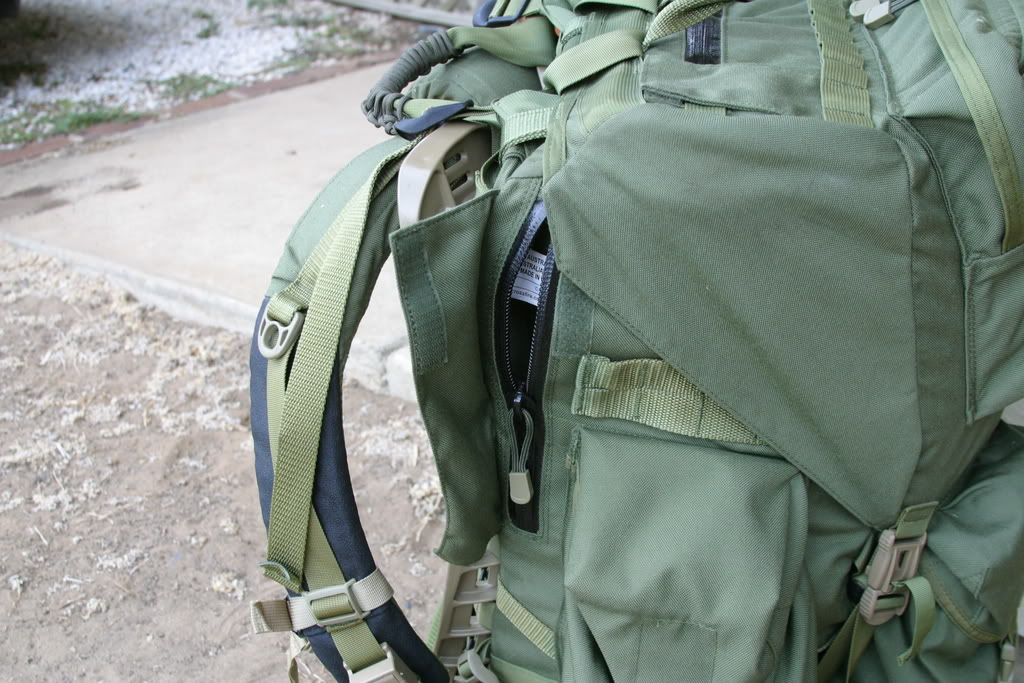
The lid has a claymore pouch mounted on it, and is able to be quickly detached for use as an E&E bag. Emergency shoulder straps are fitted for this purpose. Under the lid is a zip-access pocket for small sundry items. Since I no longer have a need to carry claymores anymore, this pocket is great for carrying my goretex raincoat.
In the main rucksack compartment is a sleeping bag tunnel, accessed via fastex clips from the bottom right hand (external) side of the pack. A really convenient feature is the internal mesh pockets to better organise kit and corruption. In mine, I stow my girly bag (toiletries), baby wipes, sewing kit and 90-mile-an-hour tape. These mesh pockets would also work very well for radio ancillary equipment.
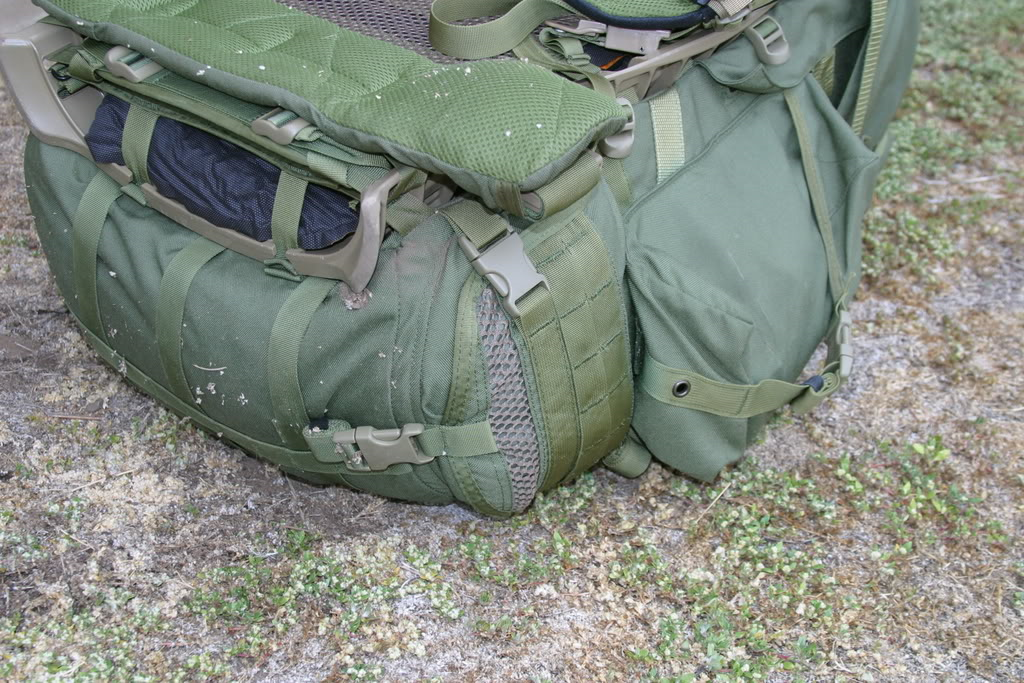
On the outside of the rucksack are 4 external pockets. Each pocket is secured by fastex clip, barrel-locked cordage and velcro. Very secure methods of closure, and can be customised to suit the load or paranoia level. It takes a load off one’s to mind to realise that the only items to be lost are due to your own negligence and lack of attention to detail when not securing kit properly, rather than equipment failure.
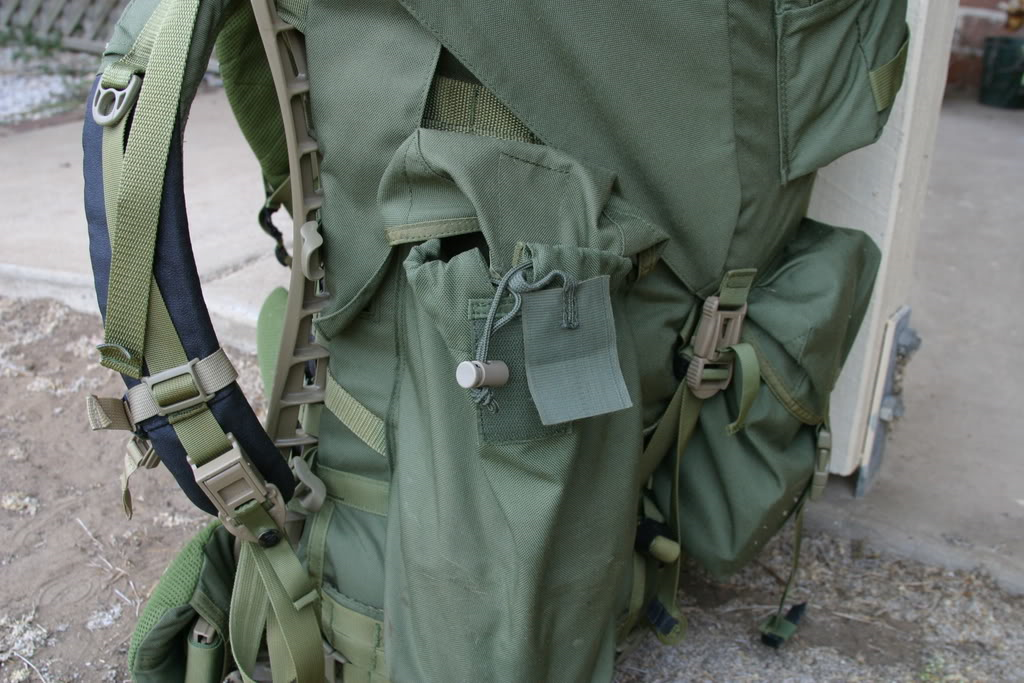
Grommets are located on all bottom surfaces to drain any excess water you may have accumulated. The pack has a host of small features that gladdens the heart of this broken digger. Construction is top notch, stitching is absolutely bomb-proof. The cordura used is of high quality. I have had my DG-6 for near 6 years now, and I’m only just starting to see wear and tear. I used my pack twice a week for training walks, have taken on multi-day walks and weekend wanderings, so it’s not exactly a cupboard queen, nor do I baby my kit.
Other small details include a small patch of reflective tape (with a cover for when it’s not needed) to allow the poor bugger behind you to follow behind at night and other low viz movement occasions. Small things, but in our industry, it is the small details that count and make life easier.
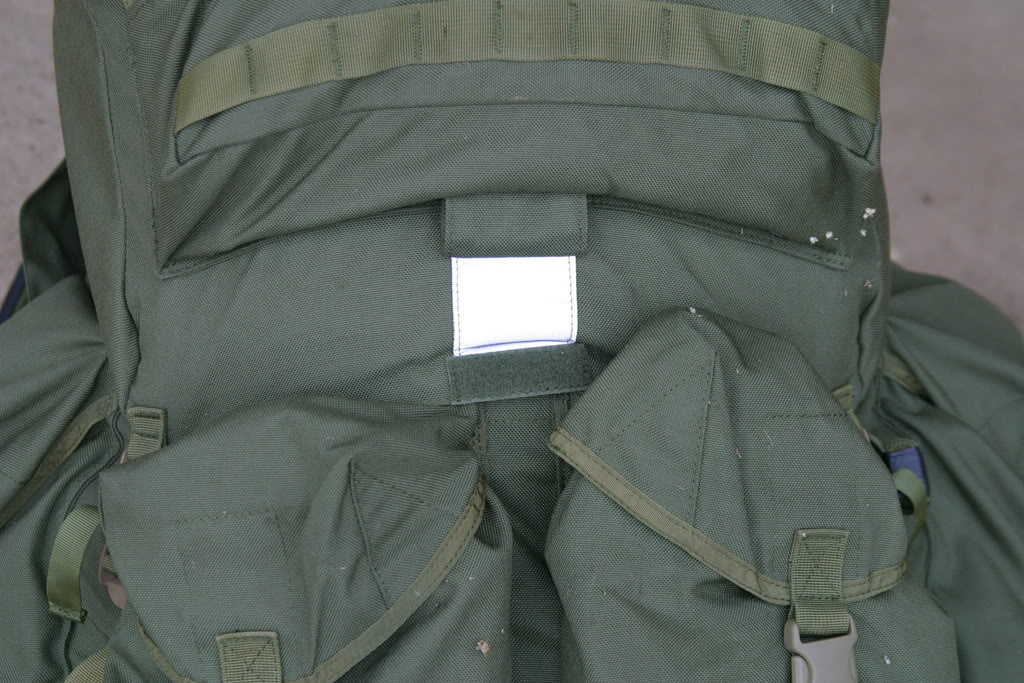
PERSONAL ASSESSMENT:
I’ve gone through a few packs (and heaps of cash) over the years to find the “ultimate pack” suitable for my needs. I can quite honestly say that while the DG-6 isn’t perfect, it comes damn close. I still find the sensation of strapping this thing a novelty. With a properly packed DG-6, one can feel the weight of the load, but the usual discomfort from a fully loaded pack is lacking. This has been observed by all my mates who tried the pack on. This is surprising, since the pack is currently set up for my lanky frame, whilst some of my mates are short and squat.
CONS –
Unfortunately, non-modular design. One can’t customise the pack layout to suit individual needs. I personally don’t find this much of a problem.
The hip belt, due to it being a compromise design to allow it to be tucked away for wear with belt webbing, isn’t as efficient at load bearing as it could be. But since this was originally designed as a really general purpose pack to suit a wide variety of user tastes and equipment, this is expected. There is no such as a free-lunch. The old saying jack of all trades, master of none is applicable in this case.
The pack is made in Vietnam. I really would prefer a pack that is both designed and built here in Australia, but such is life and the realities of the global economy we live in nowadays.
PROS –
After having carried the Australian issued internal frame combat pack (absolute unmitigated offal), a custom large frame ALICE, and civilian standard internal hiking packs for many years, I have found this pack one of the most comfortable for a military pack. The comfort level has only been surpassed by the DG-3 and Mystery Ranch line in recent times. The entire rucksack/harness/frame combination is a sprung load, offering so much comfort. The whole load actually flexes with the body, reducing fatigue and lessening the impact upon the body. I have personally found whilst carrying fairly decent loads (about 25kgs/55 lbs for a walk in cold weather environments) that I could feel old injuries, but no new ones had developed. So, in essence, struggling up heart-breaking yarma’s still blow’s goats, but it’s definitely less of a chore than with other designs.
I bought this pack because when I first got out of the service, I liked an external frame backpack with external pockets because I’m lazy and set in my ways. I like such essential items as water, first aid kits and what have you easily accessible. I’m not a big fan of the internal frame civvy walking pack. The colours are too bright, and I can’t stand some of the features. This means I often get into some [heated] discussion with yoghurt sprout eating motherf#ckers (oops, sorry: long-haired civvy bushwalking crowd) about the gear I “should” be carrying and what “actually” works. Of course, many of these w@nkers have never slept in a cold wet ditch like a mongrel dog. So much for tolerance and respecting others from those squeezers. Perhaps they should respect my diversity some time?? But I digress, and will now step off my soapbox.
Although nowadays I have joined the modern world, and gone over to an internal framed pack – once I’d found one that matches features with my experience and fetishes. Like many things in this modern world, I’ve left the ranks of the Luddites and embraced the new developments that time and technology can provide.
Maneuevering this pack through dense vegetation and terrain is a lot easier compared with many competitors due to the ergonomic design. The pack sits well within the width of the shoulders, not detracting too much from ducking and weaving through thick scrub. Situational awareness is improved with the head being free to swivel and scan high without impediment. Small things, but very good attention to detail from the designers.
SUMMARY:
So, final recommendation? I highly rate the DG-6. It definitely gets two thumbs up. Matter of fact, since I keep getting people ask me about it when I’m off stomping around on my training walks, I was of a good mind to start charging Crossfire for an agent’s commission, since I keep singing the praises of their gear.
Ironic nowadays, since I am acting as an agent for Crossfire.
The only thing nowadays, is that the DG-6 has been surpassed by such packs as the DG-3 and the Mystery Ranch line, which is discussed elsewhere.
I can say though, that there is word around the campfire that the DG-6 is to be given a new lease on life with a version fitted with the Mystery Ranch NICE frame and some more end-user input on the design (including some small input from yours truly). I’m really looking forward to seeing the new and improved DG-6 when it’s released into the market. When I get my slimy tentacles on it, you’ll be the first to see a review.
Posted in Crossfire, Long Range, Military, Packs & Webbing by 22F with 9 comments.
Leave a Reply